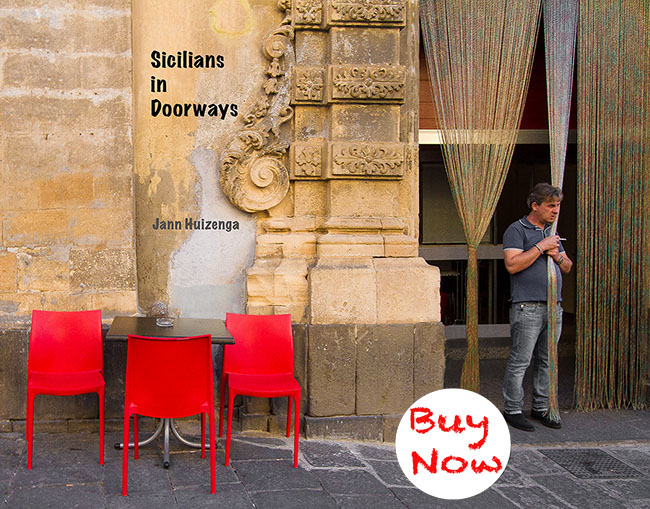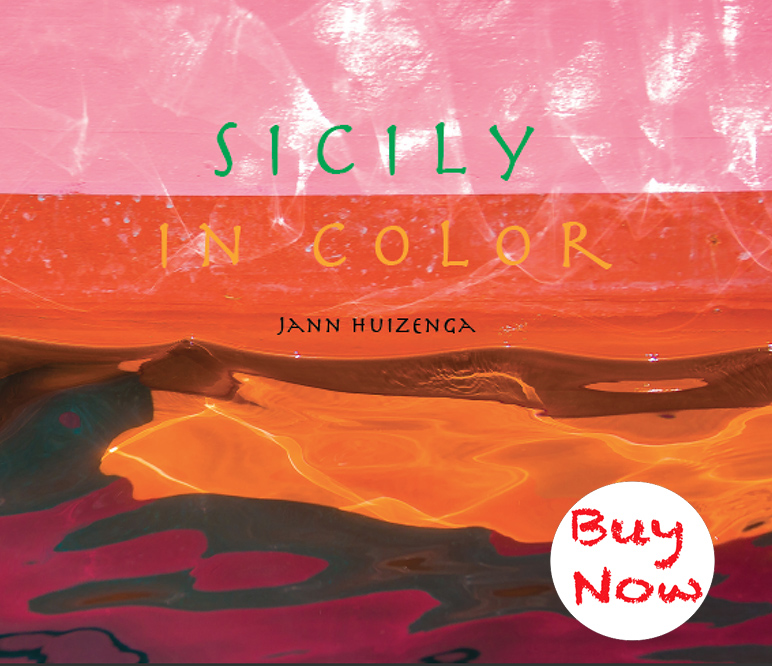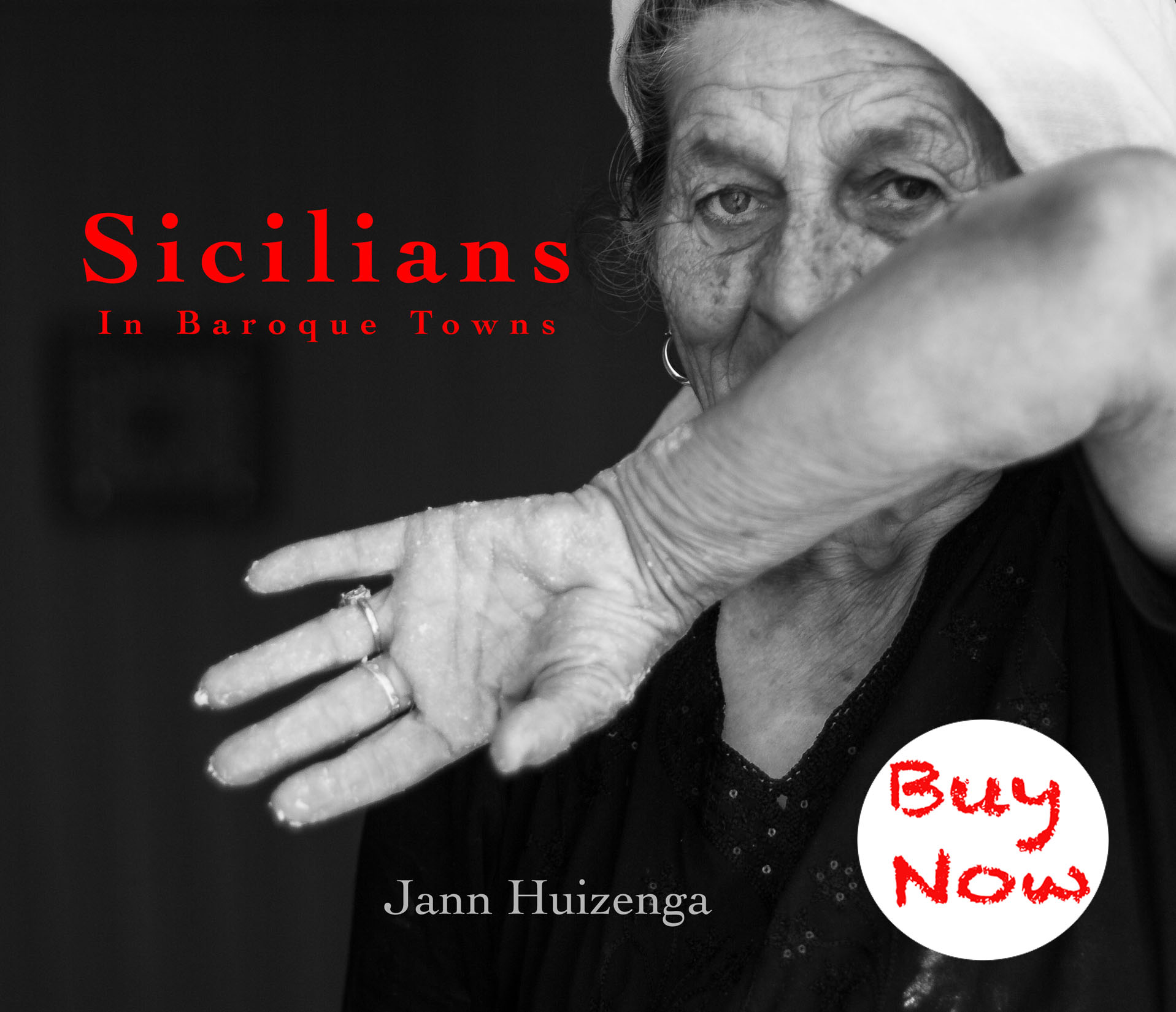November 20, 2009
A Sicilian couple I know—both with espresso-bean eyes and hair black as night—have a young daughter, Ottavia, with yellow curls and sky-blue eyes. “She just popped out Norman,” says her mom. “We were shocked.”
According to Vincenzo Salerno in Best of Sicily Magazine, medieval Normans—mainly knights and soldiers—came to Sicily between 1061 and 1160. Most married Sicilian women.
A thousand years later their blue-eyed genes still pop out like Cracker Jack surprises in the Sicilian population.
I spotted this signore in a hole-in-the-wall barbershop in Ibla. When his Norman eyes met mine, I half-swooned and half-expected to see a suit of armor hanging from the coat rack behind him.
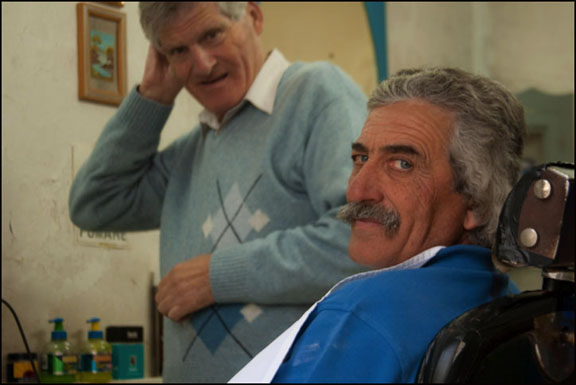
November 11, 2009
After gorging yesterday on focaccia con funghi and cannoli con crema—typical Sicilian fare—I swore I was going to diet today.
But when I swatted away the plastic bead curtain of my local bakery this morning looking for a small roll, a magnificent mound of deep-fried, sugar-dipped fritelle greeted me.
It’s November 11, San Martin’s Day, the baker patiently explained, and we always eat fritelle on this day. I asked her to put one in my bag.
“With raisins or chocolate?” she asked.
In the name of research, I got both. Here they are precariously perched on the railing of my balcony, against the backdrop of Ragusa Ibla’s San Giorgio cathedral.
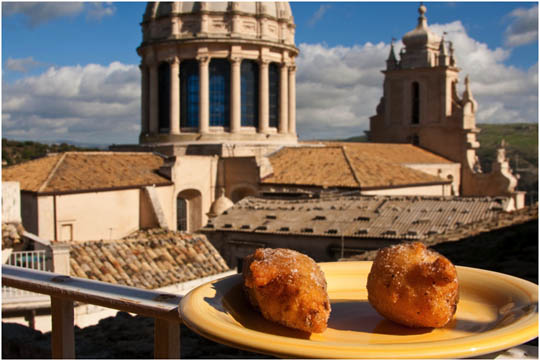
I wish you could hear how wildly the bells are clanging in the bright blue air as I bite into these pillow-soft fritelle. They are like glorified warm donut holes, perfumed with fennel.
On November 11, San Martino, new wine is considered ready to drink for the first time. The new wine should be enjoyed, or so said my smiley baker, with typical Ragusan dishes—ricotta-filled ravioli as a first course, pork chops as a second. And fritelle for dessert. But never mind, I made them my main course and washed them down with an old wine.
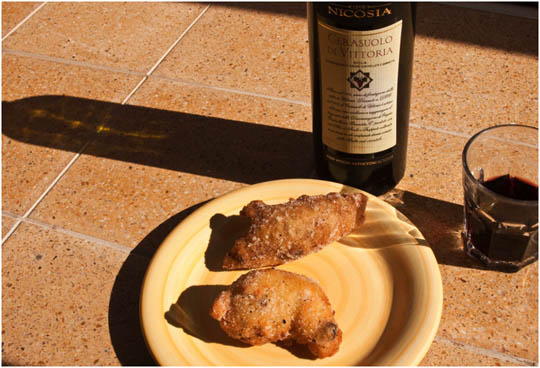
November 2, 2009
A few years ago, I wanted to buy a ruin of a house on a solitary road out beyond the Ragusa cemetery. Sicilian friends (perfectly rational, well-educated ones) said I was matta, insane, that I’d be visited at night by dead souls.
“What do you mean?” I hollered. “I live two blocks from a cemetery in the US and I’ve never seen a ghost!”
They looked at me mournfully and insisted that the danger was real. They themselves would absolutely never pay me a visit there!
So I gave up the idea of that house with its faded pink walls, shocked at how alive the dead are in Sicily.
Sicilian cemeteries are always set well outside of town behind imposing walls. Below is the Scicli cemetery, full of mausoleums, magnificent pines and tall cypress.
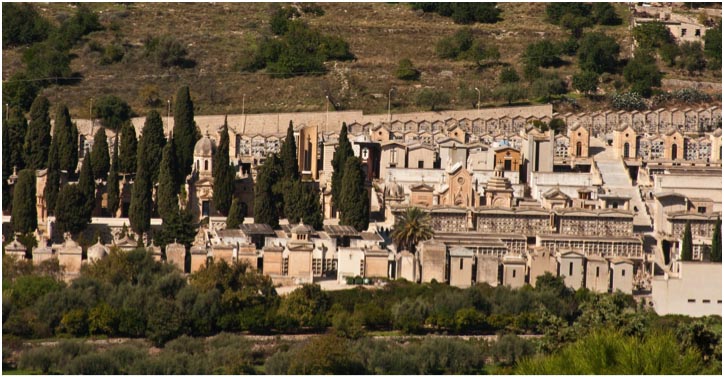
Cemeteries here are well-tended, with custodians and on-site florists. They seem to be open most of the day, even during the long lunch break.
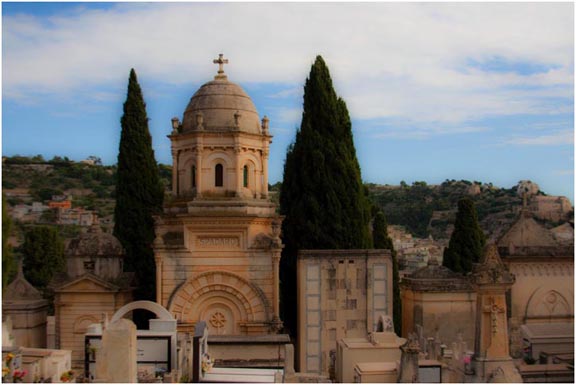

Many of the tombs show pictures of the dead.
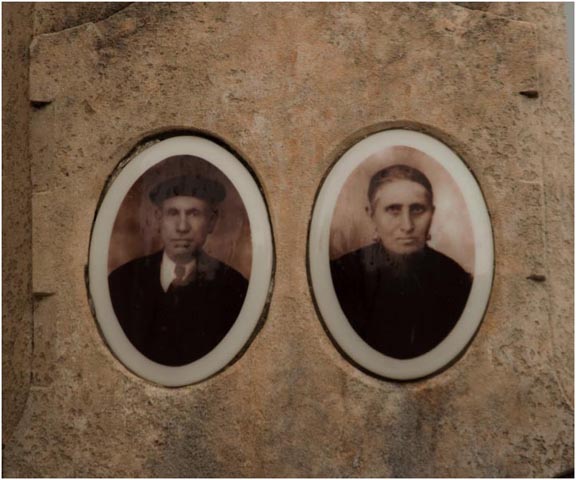
Streets have names, just like in a real town.
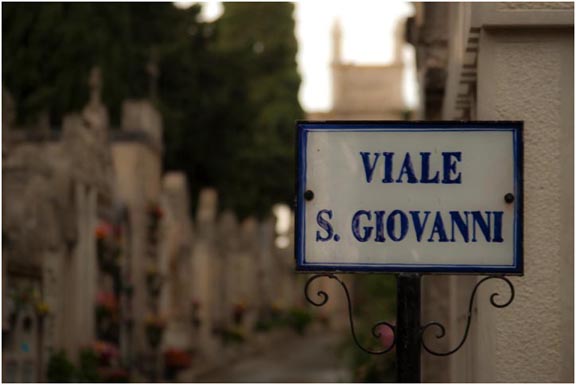
Today is il Giorno dei Morti, Day of the Dead. Sicilian families flock to cemeteries—arms overflowing with lilies, mums, roses, and daisies—to spend time with their dearly departed.
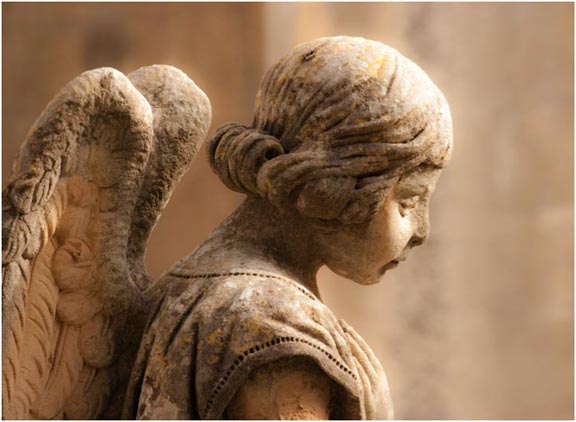
October 26, 2009
It’s persimmon season in Sicily. The hawkers are plying town with truckloads of ripe persimmons—fruit of the gods, according to the Greeks, and guaranteed, according to my hawker, to put a blush on your cheeks, thicken your hair, double your energia.
The roving vendor parks his truck smack dab in front of my portone and starts shrieking “Cachi!” (pronounced like khaki, but with the accent on the last syllable in Sicilian). Housewives rush out in their slippers.
Persimmons have scared me ever since my husband and I each yanked a pretty yellow fruit off a Montenegrin tree a quarter century ago and greedily bit into the under-ripe flesh. One never forgets that nasty cotton-mouth taste.
But I’m learning. I bought these four persimmons yesterday. The two in the foreground are not yet ripe, the vendor warned. Non mangiare adesso!
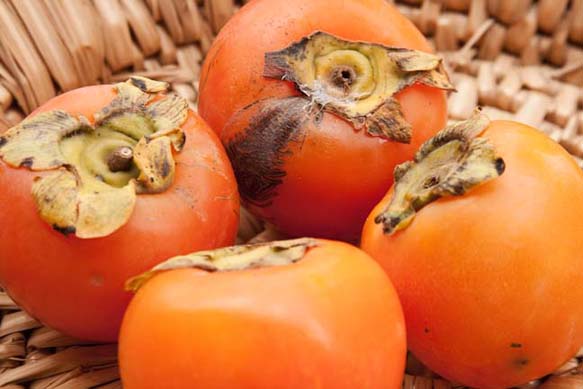
They need to turn from a yellowish/pumpkin-y color to a reddish/tomato-y hue, (like the two in the background), and they should develop a black spot or two to indicate they’re ready to eat, or so said my Sicilian expert.
I’ve just eaten the persimmon with the black spot on it, and it was so incredibly sweet and soft I practically drank it down. Liquid fruit. The opposite of cottony.
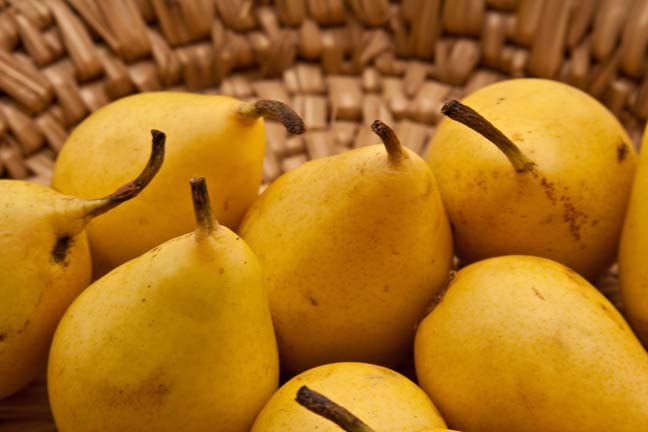
Pears from Bronte—a town on the flanks of Mt. Etna and famous for its pistachios—are also in season. They’re tiny and soft and sweet and I eat three at a time.
October 12, 2009
Fog comes like a ghost to Ragusa Ibla some mornings in autumn. It shrouds the village in soft silence and mystery—or should I say more mystery, for there’s something inherently secretive and mystifying about Sicilian hill towns.
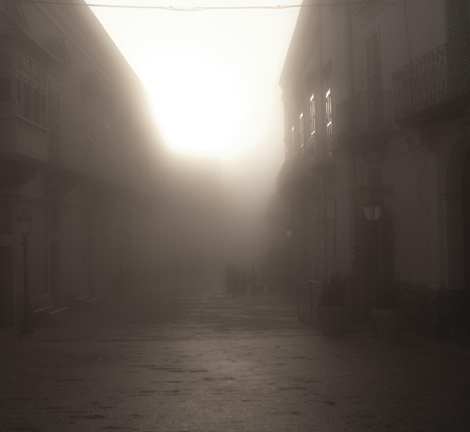
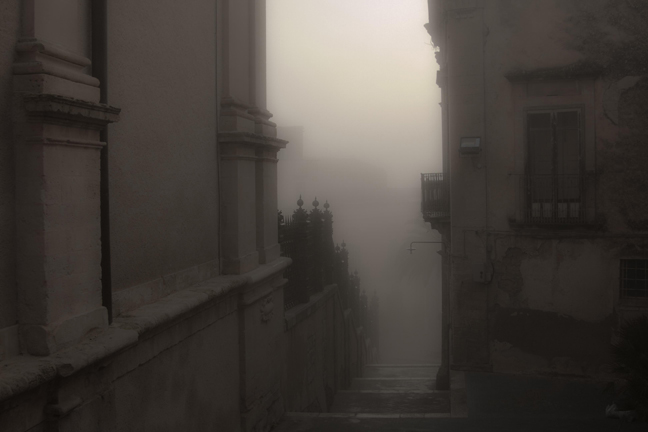
That otherworldly feeling evaporates well before mid-morning in Ibla, when the sun comes burning through. The ghost may settle much longer in the low places, though.
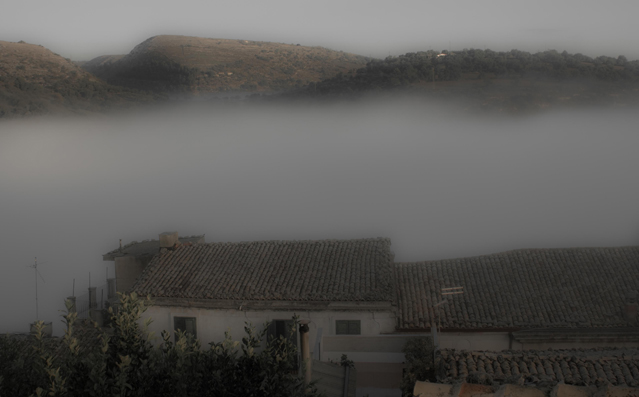
My neighbors tell me that the fog is new, that it first rolled in when la diga, the dam, was built outside of town several years ago. The mist lifts off the water of Santa Rosalia Lake, a beautiful place on the Ragusa Ibla-Giarratana road (SS194). I recommend driving along this charming, curvy little road (but not when it’s foggy!) and stopping at the lake for its wonderful vistas. I hear the fishing is good too.
|
Subscribe to Baroque Sicily
Copyright reserved -
All photos and text on BaroqueSicily are Copyright of Jann Huizenga ©2009-2015, unless otherwise noted. Material may not be copied or re-published without written permission. All rights reserved.
|














